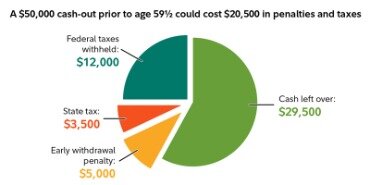Study Notes on Cost: Concept and Classification Cost Accounting

Stability in asset prices is achieved under this principle while recording. Which of the following factors would suggest a switch to activity-based costing? Overhead costs constitute a significant portion of total costs. Marginal cost is the expenses needed to manufacture one incremental good. As a manufacturing process becomes more efficient or economies of scale are recognized, the marginal cost often declines over time. However, there is often a point in time where it may become incrementally more expensive to produce one additional unit.

When a transaction takes place, it typically involves both private costs and external costs. Organizations following the revaluation concept need to apply technical accounting rules regarding unrealized gain, and depreciation. It is easy to locate the cost of the assets as there is no judgment. There is no revaluation, and there is no change in the amount/balance of the asset.
Which best defines opportunity cost?
Life-cycle cost is the summation of all costs, both recurring and nonrecurring, related to a product, structure, system, or service during its life span. Life cycle begins with the identification of the economic need or want and ends with the retirement and disposal activities. LCC are a summation of all the costs over the entire life span of a structure, or system. It is the minimum remuneration that a firm should get in order to remain in an industry.
Based on the historical cost principle, the transactions of a business tend to be recorded at their historical costs. As the valuation of assets is quicker and easier to verify, accountants and auditors tend to spend less time reviewing financial statements, making it cheaper for the businesses that hire them. With cost concept, the recording of assets at their original value is much quicker and straighter than constantly reviewing annual reports to represent current market value. Marginal Cost is the change in the Total cost when an additional unit of good is produced.
Companies use marginal analysis as to help them maximize their potential profits. Marginal cost is also beneficial in helping a company take on additional or custom orders. It has additional capacity to manufacture more goods and is approached with an offer to buy 1,000 units for $40 each. Marginal cost is one component needed in analyzing whether it makes sense for the company to accept this order at a special price. Companies must be mindful of when increasing production necessitates results in step costs due to changes in relevant ranges (i.e. additional machinery or storage space needed). The development of a method for comparative costing of individual intensive care units.
As a general rule, product costs are capitalized as a part of the inventory asset account; whereas, period costs are expensed as incurred. Some examples of historical cost principles in action are a company’s buildings, equipment, and land. These assets are not considered to be highly liquid, and their values may change over time. As such, they are typically recorded at their original cost on the company’s balance sheet. Cost concept refers to the theme or layout in which costs can be defined and segregated.
- The major drawback of the cost principle is that it lacks accuracy.
- Note that external costs are often both non-monetary and problematic to quantify for comparison with monetary values.
- The value of an asset is likely to deviate from its original purchase price over time.
Standard Costs are planned costs per unit of output that are established in advance of actual production. When an old machine is replaced with a new machine and cost incurred in such replacement is called replacement cost. It is important for such business firms where projects are replaced and the production process is changed. At the time of selling, the difference between market value and the asset’s book value could be huge as the cost concept does not consider inflation or any other market value changes. Budgeted Costs refer to the expected cost of manufacture computed on the basis of information available in advance of actual production or purchase. Practically, budgeted costs include standard costs, both are predetermined costs and their amount may coincide but their objectives are different.
Variable costs refer to costs that change with varying levels of output. Therefore, variable costs will increase when more units are produced. So, the concept of cost in economics includes actual expenditure on inputs (i.e., explicit cost) and the imputed value of the inputs supplied by the owners (i.e., implicit cost).
Classification of Cost:
Also, the cost of recording and updating asset values on a regular basis is time-consuming and expensive. Furthermore, the sources that are available for determining present values are diffused, which makes updating them challenging. The primary one, of course, is that most people cannot agree on what an asset’s present value is, whereas the price paid as the asset’s acquisition cost is beyond dispute .

If the marginal cost of producing one additional unit is lower than the per-unit price, the producer has the potential to gain a profit. Money cost is that cost which is expressed or measured in monetary terms. It is the cost in which they express are included namely the price of raw materials, wages of labour, interest on capital, rent on land, salaries of managers and the normal profit of entrepreneur.
Implicit Costs
A company can maximize its profits by producing to where marginal cost equals marginal revenue . Useful LifeUseful life is the estimated time period for which the asset is expected to be functional and can be put to use for the company’s core operations. It serves as an important input for calculating depreciation for assets which affects the profitability and carrying value of the assets.
What I learned from the British canals – Resilience
What I learned from the British canals.
Posted: Mon, 17 Apr 2023 15:21:41 GMT [source]
The historical cost concept, which advocates recording the asset at its original cost, is basic accounting principles as per US GAAP . As per this principle, the value of assets in the financial statements remains the same even if their market value increases or decreases. The assets are recorded at their original cost after accounting for depreciation, if any.
What is Cost?
For example, a company vehicle might have been in an accident and completely totaled. The book value or current value would still be showing the vehicle is worth something on the books. The market value would be way lower since the vehicle is now out of order and would require significant repair work.
The relevant range of production is the range between a minimum and a maximum production activity where certain revenue and expense levels can be expected to occur. Revenue and expense amounts will likely increase or decrease when production activity falls outside of the relevant range. In a manufacturing environment, product and period costs can be estimated with a reasonable degree of accuracy within the relevant range. Cost estimates are less likely to be accurate when production falls outside of the relevant range.
However, manufacturing the 101st lawnmower means the company has exceeded the relevant range of its existing storage capabilities. That 101st lawnmower will require an investment in new storage space, a marginal cost not incurred by any of the other recently manufactured goods. Marketable SecuritiesMarketable securities are liquid assets that can be converted into cash quickly and are classified as current assets on a company’s balance sheet. Commercial Paper, Treasury notes, and other money market instruments are included in it.
How FinOps Can Help Optimize Cloud Spending – ITPro Today
How FinOps Can Help Optimize Cloud Spending.
Posted: Tue, 18 Apr 2023 04:09:51 GMT [source]
Under this concept, stability in asset prices while recording is achieved. However, there are also some limitations to the cost concept of accounting. The historical cost of an asset refers to its purchase price or its original monetary value. This can also be understood by a simple example – Let us assume that an individual has two job offers in hand. One job offer is promising him a salary of Rs. 30, 000 per month while the other job offer will ensure salary of Rs. 25, 000 per month.
Cost Concept of Accounting FAQs
An example of opportunity cost would be the cost of planting anything else than wheat for a farmer who plants wheat instead of something else. The measurement of accurate and reliable profits and losses for a business over a period of time. Thus, it is occasionally the case that some fixed assets must be revaluated as a practical matter. Such revaluations, whether upward or downward, must be disclosed in terms of the amount and date of the revaluation for a subsequent period of five years. Examples of such assets include cash, government securities, and amounts to be received from debtors. This is because, for these assets, their present values are practically identical to their acquisition cost.
Thus, cost of an article means the actual outgoings or ascertained changes incurred in its production and sale activities. In short, it is the amount of resources used up in exchange for some goods or services. These costs are also defined as the opportunity costs used in the various factors of production. The cost of renting the booth at the entertainment venue is a fixed cost. Assume Big Drink pays $3,500 per month to rent a booth at the entertainment venue.
Ans.Direct costs include direct labor, commissions, direct materials, piece-rate wages, and manufacturing supplies. Fixed costs are costs that do not change with changing amount of production. These costs remain unaltered even if production is increased or decreased. These costs are specifically independent of the business costs of the company in all situations.
- Retail stores such as Walmart and Target are examples of merchandising operations.
- We believe that sustainable investing is not just an important climate solution, but a smart way to invest.
- It is interesting to note that if more units are product, fixed cost per unit will be reduced, and, if less units are produced, obviously, fixed cost per unit will be increased.
- Variable costs refer to costs that change with varying levels of output.
This part of the electric bill is what is bookkeeping since it depends on usage. The total electric bill has both a fixed and variable component so it is considered a mixed cost. The idea of the concept of cost is probably as old as economics itself and so, it is easily understood that cost is an indispensable concept in the subject of economics.
